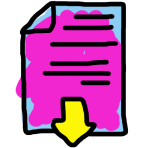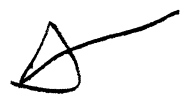000 in the Limmat
During the Inca Empire the coca plant was used for spiritual and religious rituals and to this day it is considered sacred by indigenous communities in parts of South America. In the Andes people chew the leaves for the stimulating effect and the leaves of the low-growing shrub are also used for drinks and edibles. The plant contains a substance which has an energizing effect and heightens the senses. It is also from the coca plant from which the drug “cocaine” is extracted and consumed in Europe and other places around the world,
A recent study by EMDDA (European Monitoring for Drugs and Drug Addiction) published in 2022 compared wastewater analyses in some 80 European cities to investigate the drug use of Europeans. The results provide a valuable snapshot of drug flows and consumption in the participating cities and reveal significant geographical differences. Switzerland is represented by a total of four cities in the top 10: First and foremost is St. Gallen, which ranks second in Europe after Antwerp (Belgium) and ahead of Amsterdam (Netherlands), with cocaine use of 888 mg per 1000 persons per day. Zürich comes in fourth place with an average concentration of 790 mg of cocaine per 1000 persons per day and is followed by Geneva and Basel. To put this into perspective, a line of cocaine normally ranges about 25 – 50 mg.
A thorough investigation by the journalist Simon Lechmann shows that the Swiss are not only avid consumers of cocaine but also drug traffic has expanded more and more into Swiss territory. The cantons of Graubünden and Ticino, in particular, are becoming active hot spots in the cocaine trade of Kalabrian mafia ‘Ndrangheta. The drug is shipped from South America to harbors in South Italy and then further transported and stored in facilities close to the Swiss border. Individual messengers then bring small amounts of cocaine across the Swiss border mainly using the alpine passage San Bernardino. The city of Thusis is a hotspot of the cocaine trade, as was confirmed by the Swiss Federal Police (fedpol). Another analysis of cocaine use and trafficking is Roberto Saviano’s book ZeroZeroZero, which shows the devastating effects of cocaine on societies and political structures around the world. A particularly hard-hit continent is South America, where cocaine is the cause of bloody and long-lasting conflicts in many territories. The demand for and consumption of cocaine, for example, is partly responsible for the long-lasting conflict in Colombia, where the plant is cultivated in rural regions and processed into cocaine in the cities. It is a reality marked by displacement, violence and killings, financed and maintained with the money of the drug trade.
The drugs we consume here for fun and their enhancing effects on productivity have direct and dire consequences for the Global South, as it perpetuates an economic dependence and exploitation of resources. Thus, it can be understood as a neocolonial act in which we disregard the effects our actions have on other states, communities and individuals.

